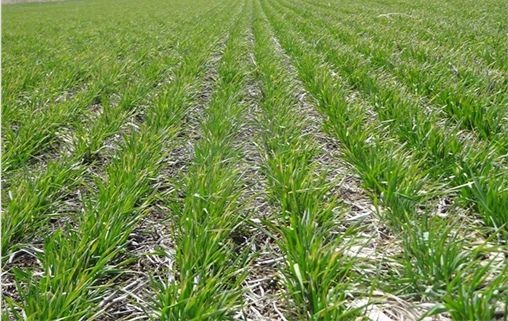Govt targets 85 000 hectares of winter wheat
Share

Harare (New Ziana) –The Zimbabwe government says it is targeting to put at least 85 000 hectares of land under winter wheat this year, up from over 42 000 hectares achieved last year.
Last year, the government initially targeted 80 000 hectares of winter wheat but this could not be met due to several challenges including inadequate water sources for irrigation in some parts of the country.
But this year chances of meeting the planting target are higher, as most dams in the country received adequate water inflows following a good 2020/21 rainy season.
According to the Zimbabwe National Water Authority, the national dam level average stood at 92.6 percent as of Tuesday last week.
The Ministry of Lands, Agriculture, Fisheries, Water and Rural Resettlement said winter wheat production would be supported under three programmes.
“The government is targeting 85 000 hectares of winter wheat this year under three programmes; 60 000 hectares under command agriculture, 15 000 hectares under private investors and 10 000 hectares under Presidential inputs scheme,” it said.
According to the Grain Millers Association of Zimbabwe, the country requires 400 000 tons of wheat annually, consisting of at least 270 000 tons of local production and approximately 130 000 tons of specific grade imported wheat to produce suitable bakers’ flour.
The Reserve Bank of Zimbabwe recently announced an additional $2.5 billion to capacitate farmers in the 2021 winter wheat planting season.
To improve the country’s irrigation capacity, the government, through Zinwa, has embarked on several dam construction projects across the country including the Gwayi-Shangani in Matabeleland North province, Sengwa and the Marovanyati Dams in Mashonaland Central.
The dam projects are part of a deliberate strategy to move away from rain-fed agriculture to irrigation in pursuit of an agro-centric economic growth plan.
Construction of new water bodies is expected to assist food-insecure communities through providing water for irrigation and fish from Command Fisheries while electricity would also be generated from some of the projects.
The resuscitation of Zimbabwe’s agricultural sector remains key to improving the livelihoods of ordinary Zimbabweans and irrigation development could be the answer as climate change has affected rainfall patterns.
With over 70 percent of Zimbabweans living off agriculture, there have been calls for the government to invest more in irrigation to increase agricultural production.
The country has over the past few years seen its agricultural production fluctuate due to changing weather patterns as well as other production bottlenecks.
For example, in the 2014/15 farming season, Zimbabwe wrote off about 300 000 hectares out of an estimated 2 million hectares that had been planted after crops wilted due to poor rains.
New Ziana








